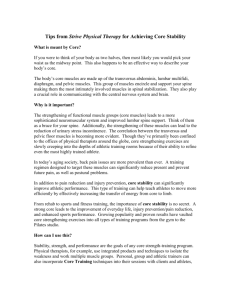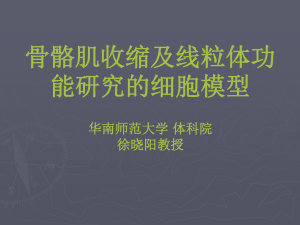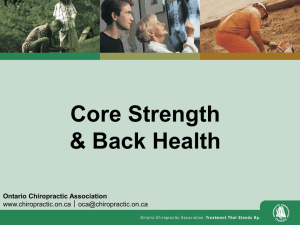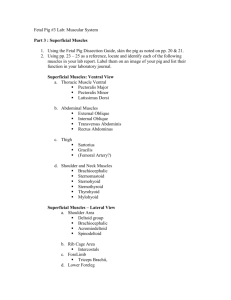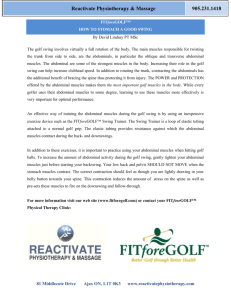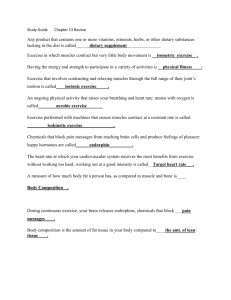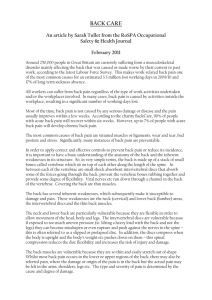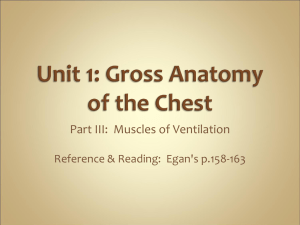Core Training Kinesiology Paper
advertisement
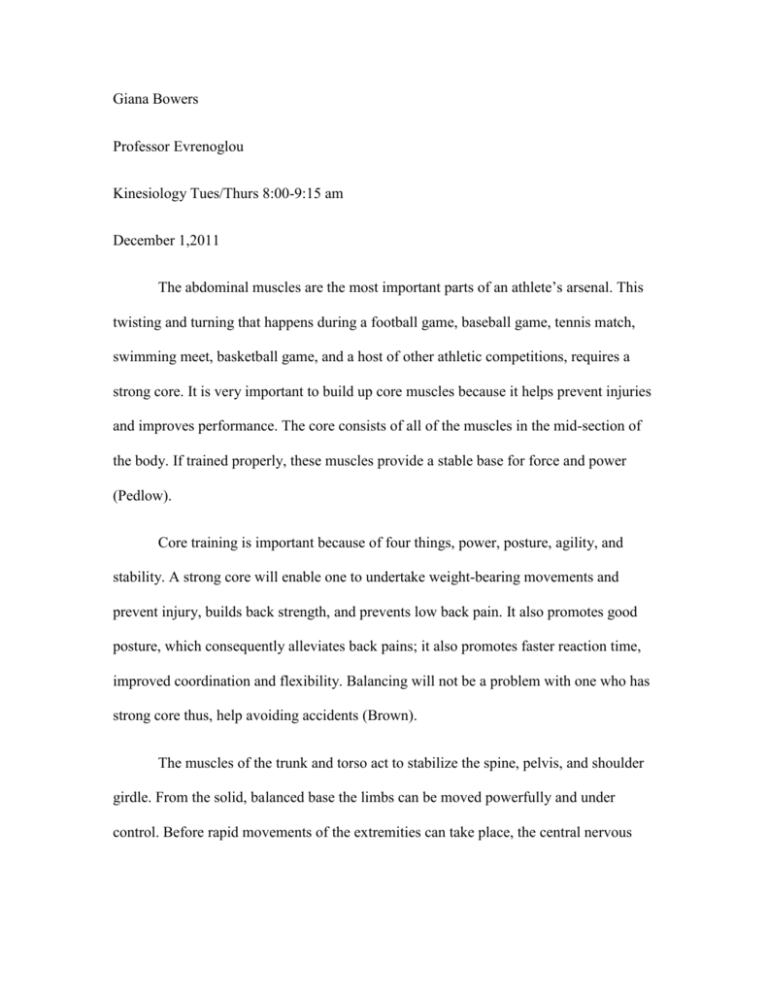
Giana Bowers Professor Evrenoglou Kinesiology Tues/Thurs 8:00-9:15 am December 1,2011 The abdominal muscles are the most important parts of an athlete’s arsenal. This twisting and turning that happens during a football game, baseball game, tennis match, swimming meet, basketball game, and a host of other athletic competitions, requires a strong core. It is very important to build up core muscles because it helps prevent injuries and improves performance. The core consists of all of the muscles in the mid-section of the body. If trained properly, these muscles provide a stable base for force and power (Pedlow). Core training is important because of four things, power, posture, agility, and stability. A strong core will enable one to undertake weight-bearing movements and prevent injury, builds back strength, and prevents low back pain. It also promotes good posture, which consequently alleviates back pains; it also promotes faster reaction time, improved coordination and flexibility. Balancing will not be a problem with one who has strong core thus, help avoiding accidents (Brown). The muscles of the trunk and torso act to stabilize the spine, pelvis, and shoulder girdle. From the solid, balanced base the limbs can be moved powerfully and under control. Before rapid movements of the extremities can take place, the central nervous system stabilizes the spine. The rate at which the core muscles stabilize the spine have a direct effect on the power of limb movement (Brown). Athletes in contact sports make sure they develop their core muscles because it contributes in keeping them in top of their game. In order to attain them, experts advise that activities like kickboxing, indoor cycling and Pilates will help you achieve it (Pedlow). According to McGill, the following tests are just a few tests that will form foundation for an accurate assessment. The assessment includes the push up test, extensor test, flexor test, and side bridge test (Brown). The push up test begins once the participant is in a proper alignment and places the left hand on top of the right. If the pelvis lifts up or droops to one side, the test is positive for a lack of torsion control. The extensor test is when the participant lies on the stomach on a bench or table. Legs must be fully secured, as the upper body will be planked out over the bench. The participant must keep a horizontal position for as long as possible. Once the flat location is lost, the test ends and the total time is recorded. The flexor test is when the participant resting with they’re back resting against a support that is angled at a 60 degree from the floor. The toes are secured with the knees and hips flexed at 90 degrees. Arms are folded across the chest with the hands resting on the opposite shoulders. The support is removed by dragging it back four inches and time begins. Once any fraction of the back touches the support, time stops and the test is finished (Brown). Weak or poorly controlled core muscles have been associated with low back pain. The back muscles are responsible for movements such as extension and flexion of the spine and rotation of the trunk. Excessive or uneven shock on the spine may lead to back problems. This may be exaggerated because weak core muscles lead to improper positioning or a forward tilt. In many exercises that use the back muscles, the abdominal muscles contract isometrically stabilizing the body. The strong and more correctly balanced core muscles are, the less uneven strain on the spine (Pedlow). Core strength differs from many traditional weight-training routines by working both the lower back and abdominals in unison. All athletic movements incorporate the core in some way; Very few muscle groups are isolated. Any exercise that involves the use of your abdominal and back muscles in coordinated fashion counts as a core exercise. Any of these types of exercises can be done at without a gym or any type of workout equipment (Pedlow). Time is precious and going to the gym can be a long affair if you need to look for parking, waiting for machines, and then driving home in traffic. Working out at home gives the option of multi-tasking. All of the core exercises and test can be done at home in your own personal space. They can also be done outside in the fresh air. There is no better way to get your mind off the days stressed then by working on core exercises outside.
